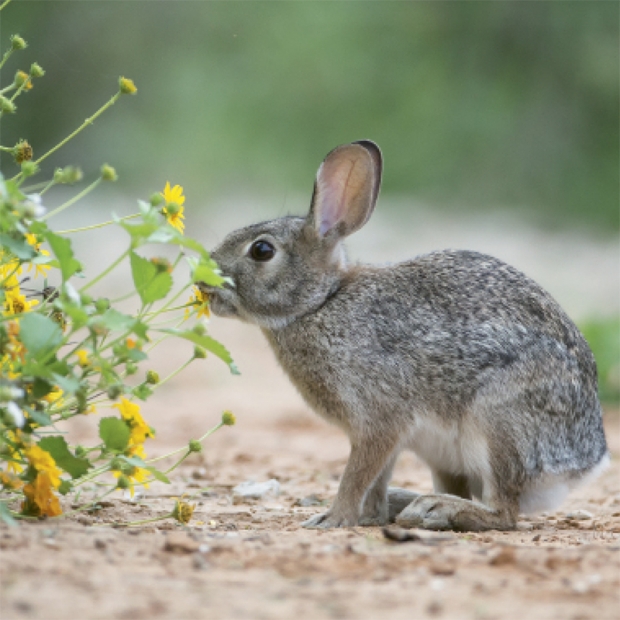(Sylvilagus floridanus) The most common rabbit species in South Carolina, the Eastern cottontail is named for its short, fluffy, cotton-like whitetail

- Runs in a zigzag pattern when chased to evade predators and can reach speeds of 18 miles per hour.
- Prefers an area where it can hide quickly but be out in the open like forests, swamps, thickets and bushes.
- “Mad as a March hare” refers to a courtship display that involves chasing, punching, leaping and running.
- Babies, called kits, are born with a white blaze that goes down their forehead that eventually disappears.
- The annual adult survival rate is estimated at 20 percent with average longevity of 15 months in the wild. It has been estimated that with no mortality, a pair of Eastern cottontails could produce 350,000 descendants in just five years.
- Feed mainly on clover, chickweed, goldenrod, strawberry, blackberry, wild cherry and grape. In winter they consume primarily woody plants, such as bark from dogwoods, sumacs, maples and oaks.